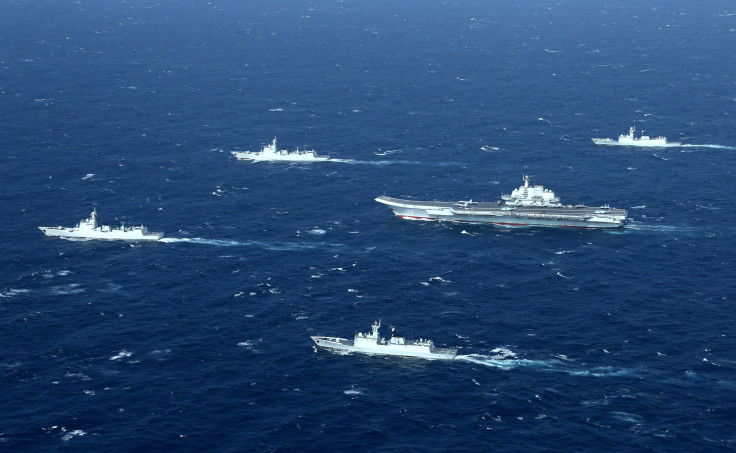China Going To War? Beijing Reinforcing Its Fleet With New Aircraft Carriers

China is set to launch its second aircraft carrier later this year while the third is expected by 2021, according to media reports Monday. The news about the launch comes just months after its first indigenous aircraft carrier, named Liaoning, conducted open-sea training exercises in the Western Pacific.
Beijing is reinforcing its fleet of aircraft carriers with two more domestically built vessels, the South China Morning Post reported. The second aircraft carrier, which is provisionally named Type 001A, will launch in 2017, but may take several more years before it can enter full service in the navy, Li Jie, a Beijing-based military expert told SCMP.
In November 2016, the country declared that the Soviet-era Liaoning, which was commissioned by the Chinese navy in 2012, was "combat ready." The Liaoning, estimated to weigh about 55,000 tonnes, may be based near the disputed territories in South China Sea in a bid to tackle “complicated situations.”
The Type 001A vessel will weigh about 70,000 tonnes, experts said.
"There are different operational concepts between the Liaoning and Type 001A," Li said. "Based on the Varyag design, the Liaoning was designed with both weapons systems and aircraft in an equally important layout, but the Type 001A has learned from US carriers to focus on how to make aircraft on board more functional."
The Type 002 vessel — the country’s third aircraft carrier — would be equipped with at least three conventional steam launch catapults, a source close to the navy told SCMP.
While the Type 002 vessel will be the first Chinese aircraft carrier to use this type of launch system.
"There are still some technical problems applying nuclear propulsion to the carrier platform, so the Type 002 will still use steam catapults,” the source said. “But this is still a breakthrough compared with Liaoning and the Type 001A carrier, both of which are equipped with ski-jump ramps."
The source added: “It will [also] take a couple of years for the newest carrier to enter full service after its launch, as it takes two or three years to train carrier-based pilots.”
Chinese authorities are yet to release the official names of the vessels.
© Copyright IBTimes 2024. All rights reserved.











